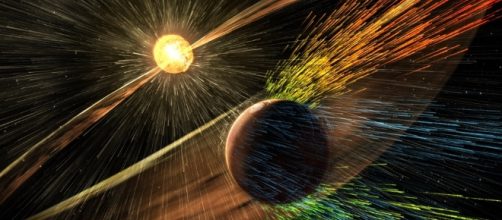NASA has just prevented a catastrophic collision between its MAVEN Mars Orbiter and Phobos, the satellite of the Red Planet. At first computer, stimulation revealed that the orbiter would miss Phobos by seven seconds. However, NASA felt that it is too dangerous a chance to be taken especially for an orbiter which cost $671 million.Therefore the mission control of MAVEN increased the speed of the orbiter by 0.4 meters so that there is a safe distance of 2.5 minutes when the two objects cross each other. The maneuver was done on March 3, 2017, for the rendezvous which is expected to happen on March 6, 2017.
Close shave with only six Orbiters
Currently, there are six spacecraft orbiting the Red Planet. It pales in comparison to 1400 spacecraft which are orbiting Earth. Therefore the complexity of avoiding collisions between the spacecraft orbiting the Earth can be imagined. Most of the spacecraft are moving at blinding speeds which is not discernible by human eyes. Therefore the collision will happen much faster than any reaction by humans.
Whenever any spacecraft is going to make a close pass, the satellite operators are warned, and it is up to the operator to take evasive action as per the threat of collision potential. If the risk is high, onboard motors are started to slow or accelerate the satellite to avoid a collision.
Maven had made a maneuver earlier also to prevent a close shave with a comet.
NASA prevents probe's collision with Martian moon Phobos - NASA's MAVEN spacecraft and Phobos would have arrive... https://t.co/wo8m3sYKFU
— Slumber Gang (@deionthagreat) March 4, 2017
Nanosatellites confound the problem
The situation on Earth is more complicated and is getting worse these times with the increase in Cubesats or Nanosatellites which weigh 1 kg. These satellites are small and within reach of Universities and small businesses. India sent 104 satellites which included 101 nanosatellites. These satellites have very short life and in coming days scrap from redundant satellites will increase many folds. Skeptic says this is not a wise thing to do and is not sustainable in the long run. Space experts like Hugh Lewis have counted more than 360,000 close encounters involving satellites since 2015.

